Mowing

Mowing is extremely important in any good turf maintenance program. Mowing needs to change with the seasons, weather, nutrients and many other factors. One rule to follow is never mow more than a third of the leaf at any one time. Grass plants have a growing point where all of the leaves originate. When grass is mowed frequently; that growing point is close to the ground. If grass is allowed to grow too long, the growing point moves up away from the ground. A close mowing at that point will cut off the growing point as well the grass blades. If your lawn has not been maintained for a period of time, set your mower height for the first mowing, then gradually lower it back down to optimal mowing height. Frequent mowing at the optimal mowing height for your lawn, will insure that you aren’t removing too much of the leaf blade and you should be on your way to a lush, healthy lawn without scalping. Your grass should be cut according to the type of lawn. Mow couch between 5mm-30mm height and buffaloes between 30-50 mm .Do not mow if hot weather is expected and avoid cutting the lawn shorter than height required. Always ensure your mower blades are sharp.
Watering
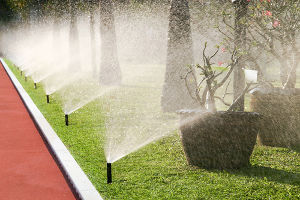
Irrigation is a process of adding supplement water when rainfall is insufficient to meet the needs of the plant .In dry regions; irrigation is necessary for turf survival. Limited water supplies across the country have placed a new emphasis on the responsible use of water, when water shortages occur. Lawn irrigation often is one of the first uses to be limited. Water only when your lawn needs it. How often you water your lawn will depend on the weather, the type of the lawn and the soil conditions. Sometimes your lawn will change colour, fold its leaves and look greyish in colour, this is an indication that it may need watering.The lawn should be partly died out between watering, this lets air to the root system, stimulates deeper root formation and creates a more drought resistant lawn. Winter watering is generally reduced somewhat, unless it is an abnormally dry season. During warmer months, a good deep watering once to twice a week will be sufficient. Place a container near the perimeter on your lawn to be watered. When the water in the container is 10 -15 mm deep, your lawn has had enough water, this can also be tested by a soil moisture metre or simply use a long screwdriver or spade. To minimise water wastage, test wetting depth of your lawn after watering and only continue watering to wet the full root depth.
Contact your supplier for watering guidelines for the establishment of a new lawn or an existing lawn in Sutherland, Hawkesbury, Campbelltown, Northern Beaches, or any other Sydney area..
BEFORE WATERING YOUR LAWN PLEASE CHECK IF WATER RESTRICTIONS ARE IN PLACE WITH YOUR LOCAL WATER AUTHORITY.
Fertiliser
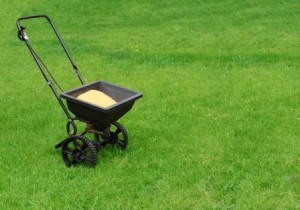
Fertilising is a process of adding a natural supplement when soil structure is inadequate, to maintain a living plant and to assist in a healthy living lawn in applying fertiliser. Fertiliser should be well balanced and used to manufacturers specifications, [usually between 4 – 12 weeks]. Apply fertiliser regularly all year round and prior to cooler seasons and water restriction periods to maintain optimum appearance, also to assist in damage recovery. Always ensure that you fertilise well in autumn, as the healthier the lawn leading into winter, the better the growth and performance. When using fertilisers regularly, a soil analysis should be taken. To ensure that all major trace elements remain at correct levels. There are specially formulated professional blend fertilisers that contain Nitrogen, Phosphorus and Potassium. We have developed a Pre lawn starter fertiliser & Professional blend fertiliser which you can order by contacting our office.
Older Lawns
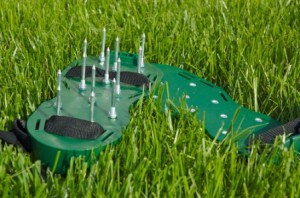
Older lawns with compacted soil will benefit from aeration to allow oxygen and fertilisers to penetrate deeply. This is best done from early spring to end of summer with a pitchfork, aerating sandals or you can hire an aerator from your local machinery hire outlet. Be aware of any underground services or irrigation pipes. Thatch is the organic cushion that builds up above the soil level. De thatching is required. De-thatching machines can be hired from your local machinery hire outlets. Always water lawn well after applying fertilisers. Fertiliser and chemical application will depend on climate, lawn type, soil types, insects, weeds and disease conditions for fertilising and maintence requirements in your area, consult your local nursery supplier. When using fertiliser or chemicals caution should always be used. Always use to the manufacturers specifications. Remember local water restrictions may apply within your area. Refer to this infomation purely as a guide as every situation is unique.
Builda Lawn Starter
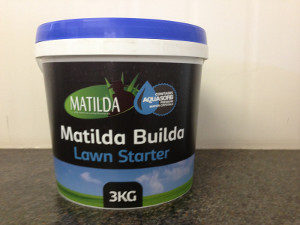
This produce can be used on all turf types to gain benefits of aquasorb crystals. Builda –Lawn starter is a premium starter fertiliser blended with aquasorb water crystals designed for use when establishing a new lawn
The blend of slow release fertilisers promote fast root growth vital for a strong and healthy lawn. Slow release fertilisers are important to your new lawn and provide a constant supply for nutrients during establishment period.
The addition of aquasorb water crystals help provide water during dry period and store much of the natural water from rainfall. Aquasorb water crystals can hold upto 400 times their weight in water and provide 95% of this moisture back to the lawn.
Application
Lawn starter needs to be applied under your new lawn.
For your lawn to benefit the most from the per lawn builda apply at 30g/m2. This 3 kg bucket will cover 100 m2. For optimal results spread the starter over the turf underlay or soil and rake the area lightly to about 30mm depth.
Maintenance of lawn Builda Premium Fertiliser
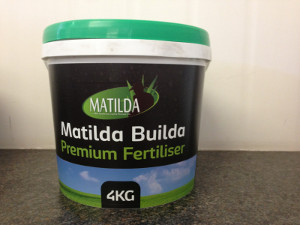
Enhance your lawn by using this fertilizer specifically developed for all types of premium lawns.
The blend of slow release fertilisers promote good growth vital for a strong and healthy lawn. Slow release fertilisers are important to your established lawns and provide a constant supply for nutrients to promote strong and healthy lawn. Always water fertiliser in well, immediately after application.
Application
Builda Premium Fertiliser has been designed for best results when applied at a rate of 25g per m2. This bucket will cover about 150 m2 and water in well.
